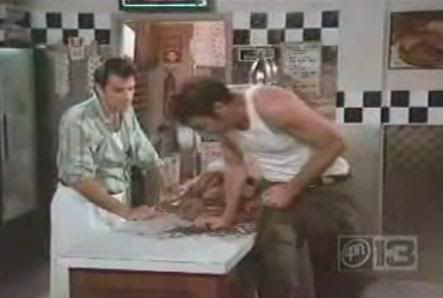A reader recently questioned on a Facebook link exactly how the logic works that by filling up with less gasoline, that prices might be affected. I am following up with this article, which copies the response to the question that was posted on Facebook. Click the link to see the previous article titled "How to Stop Paying So Much for Gas" if you haven't read it already.
The logic is explained a bit more in a previous article linked in this one. The idea is maybe better explained this way. Imagine that your family currently purchases seven 2 liter bottles every week, one for each day, and you purchase them all in one day. Then imagine that this is common practice among everyone to do this. Stores and suppliers then would expect to meet specific demand, meaning production, logistics, and inventory management need to be timed well to meet the demand. Also, because large quantities (7 per customer) are purchased in blocks, stores would know that they can charge a bit more if demand were to ever outpace their supply for a day or two.
Now imagine that instead of buying seven 2 Liters all at once, instead you buy a 3 day supply, and then imagine almost everyone changes to do this. This does a number of things to the distribution model. One, it means that there will be a sudden oversupply of soda bottles at the stores. Due to this, stores will either discount the items, because they know a truck with more bottles are coming, or they will find a place to store them, which decreases the margin the store gets for selling the product. Also, because there are now 2.333 more transactions occurring to sell the same amount of bottles as before, the store will either try to normalize by lowering price (buy 3 get 3 free!), or will tell the supplier not to ship as much product.
The supplier then has a few options. Store the excess supply they are receiving from production, at their expense, or lower costs to their downstream to move product, or tell the producers to slow production.
Now, most producers have specific mathematical models on how much product they must create in order to maintain profitability. If they lower production, they will almost assuredly run at an operating loss because though they might be able to furlough employees on the production line, the mothballed equipment on the accounting books will be depreciating on the books regardless. So, producers have that option (which shareholders will not like because it means a decrease in shareholder equity), or the factory can store the excess at their own expense, or they can lower price and *increase* production to maintain revenue levels and profitability. Doing so reduces price for everyone downstream.
In effect, this is what the OPEC nations did for decades that made oil prices per barrel get into the low teens. They produced lots and lots of oil to meet specific revenue numbers, knowing that if they didn't produce as much oil, even though they could fetch a higher price for what they did produce, their revenues would in fact be lower because they would allow more competitors into the market (such as US competitors), who would jump on the prospect of producing oil at 60 per barrel, but would never even think to produce it at 20.
It is the same thing that is causing the glut in natural gas prices, but even at historic lows, producers are producing more than ever.
Whether at the beginning of the supply chain model or at the end, disruptions of the model can and do have impact on the bottom line: price. The article is proposing that now that OPEC producers are no longer able to flood the world in oil (there is too much demand), that we as consumers disrupt their demand models. Futures traders would be spooked (I don't want to be holding a futures contract in gasoline if there ends up being too much supply on hand in July), meaning prices would go down, and mid stream producers (refineries) would lower prices as well to entice buyers. Refineries wouldn't be able to "stop" producing gasoline, because it is a bi-product of oil feed stock that produces many other chemical products. Slowing production at the refinery would reduce output for all products, some of which carry higher margins than gasoline. Refineries have been known to loss lead on gasoline for that reason.
Lastly (whew), human behavior is to binge on supply. Take the soda example. When you buy lots of soda in advance, most of the time you go through it faster than intended. The same goes for gasoline. And you'll be able to take advantage of price fluctuations since on that chance you come across a station with a really low price, you'll have at least a half a tank of empty space to stock up on it.
But don't take my word for it. It is open for debate and discussion. Let's find holes in the logic to improve it.
The interesting thing is that just today, the IAEA is confirming that the US is putting a lot of oil on the market. This increase in supply, along with reported "demand destruction" are going to hold prices lower. Let's keep up the pressure on prices from both the demand side and the supply side.


